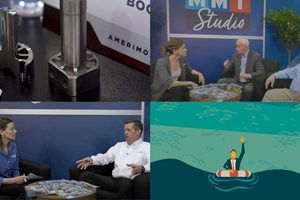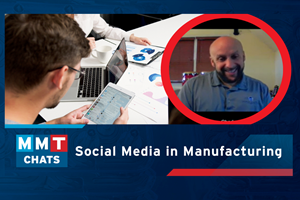Opportunities and Pitfalls When Hiring Family in the Shop
Developing a strategy for hiring family as well as succession planning is a daunting proposition for a mold shop, but it is a business task that must be addressed.
A daunting proposition for any small business is developing a strategy for hiring family and suc-cession planning. In many cases owners face a high level of uncertainty because when family is hired they delay addressing succession planning until they are ready to phase out of running their business. The decision becomes more complicated when there are multiple family members working in the business. Fortunately, there are some strategies that can be implemented to improve success when having family members working in the business.
If the business is not in the entrepreneurial stage, the founder starts the business usually at the expense of spending enough time with his family. This is where the spouse and owner need to play an important role in leadership development. They need to work as a team and start early on a program to train the children on how to take orders, be responsible for completing tasks and face penalties for failure. Learning how to respond to responsibilities has to be evaluated truthfully by the parents.
The classic problems start when there is a lack of communication between parents. Generally, the father interfaces more with the siblings in the work environment and the mother receives feedback in the home. Conflict begins when the siblings start to play one parent against the other; this can be called the Bermuda Triangle syndrome and it involves:
- Father versus Mother—Child caught in the middle
- Father versus Child—Mother caught in the middle
- Child versus Mother—Father caught in the middle
Points for Discussion
Following are some of the issues that should be discussed early in the decision-making process for hiring family members.
Father/Mother Relationship
- Is there a burning desire by the family members to be in the business?
- Is there communication and agreement for training and evaluating family members?
- Depending on a company’s size and with today’s complexity of running a business, are college and MBA training preferred or is there an agreement to follow an apprenticeship-learning ap-proach to future ownership?
- Is the spouse active in the business and aware of its mission?
- Has the business developed a business plan so that everyone understands the company’s goals?
Father/Child Relationship
- Is the person able to work with the father?
- Many times fathers will delegate training responsibilities to someone in the organization without a clear program for progress.
- Is this acceptable to the family member learning the business?
- Will the young people have the drive and determination to meet a father’s expectations?
- Are meaningful programs, ideas and assignments being delegated to the children to upgrade their skills?
- Is a family member being groomed for a leadership role?
- Is there a target date for a baton change?
Son/Mother Relationship
- Is the relationship sound for young people?
- Is the son trying to satisfy a family desire for entering the business, going to college or entering a totally different field?
- Is the mother using the kids as a pipeline to check on what’s going on in the business?
- Fathers sometimes are harder on their working children than mothers who become the protectors. Is the mother realistic if involved in establishing pay structures for the kids?
The Business Plan
A family business—like any successful business—always has a recognized top person. It is this person’s responsibility to foster communication throughout the organization. An effective way to keep everyone involved and on the same page is a written business plan.
All employees and especially family members need goals, which need to be achievable, measurable and rated on importance. Assign a percentage value to each goal. When the goals are developed all parties need to agree to the program. The goals need to be signed by both parties and dated. Now you have a contract that will eliminate future misunderstandings on what was expected by both parties.
Target immediate goals for an annual review that also is tied into a personal financial review. When the financial rewards are included in a person’s performance it usually gains attention. A business plan also should be developed to include three- to five-year goals, so each employee has the same vision for the business.
Monitoring progress on the goals should be reviewed at least every four to six months. If changes or additions are made, make sure both parties agree and modify the written contract.
Owners need to be aware that family hiring creates the (SOB) Sons/Daughters of the Boss syndrome. Family members will not be treated like everyone else in the organization. Watch to see if excessive delegation of their work assignments are given to other employees and then the family member takes credit for good results. If the family member is told they are being groomed for executive positions, do they have a sense of urgency? Having a safety net under your performance is a comforting feeling. This is a good reason to have people work outside the company before being considered for a position in the family business.
Leadership Role
When training family members, leadership is a job requirement that is most important and sometimes difficult to evaluate. Leadership is something that can be taught but not everyone is capable of learning it. Sometimes you need the right environment to evaluate leadership.
For example, an owner’s son was told he would become the next president. He was intelligent and in the process of mastering the trade by working in the factory while getting a college degree at night. Everyone knew he was going to be the future president, but many employees were not willing to train or listen to him. He gave orders, but was somewhat lazy and insensitive to other people’s requests for help. However, there was hope! One evening as he organized a fantasy NFL Football League with his friends—ordering pizza and beer, building the boards on which to conduct the mock football drafting, establishing the rules and running a very efficient meeting—another employee overheard him. The next day he was congratulated on his organizational skills. He also was asked why he didn’t exhibit that same type of leadership in work situations. His reply, “Since I’m going to be the boss, I don’t need to waste my time by being a diplomat.”
This ended up being a great observation because he finally started to understand that listening and diplomacy were important in the establishment of leadership. Leadership is setting the right examples for getting loyalty, cohesiveness and support from your business and family members.
Skills Evaluation
When multiple family members are working in the business, many times it is desirable to form a non-family board of directors to help evaluate the skills of each family member to determine who would be the most competent successor. Most people want to keep the family and business together, but getting outside help eliminates the remarkable talent parents have for overlooking their children’s weaknesses. If the non-family directors play an active role in the selection process, you are generally able to fairly evaluate leadership and competence for taking over the business.
The Succession Plan
Another big problem in a family business is having the present owner let go of the business. Many owners talk about it, but devise ways to stay involved because not being in total control seems to frighten many owners. Today computers make it easy to stay in touch with the workforce from any where in the world, so owners must let go of the business, and setting a timetable and sticking to that date is a must.
Owners can keep their office and be ambassadors, but only with the understanding that they are not decision makers. They should be sounding boards for the present staff, but only if asked. Everyone in the business will know to what extent you have removed yourself and only you can determine the support you will give the new business head.
Somewhere between 80-90 percent of all businesses are family owned or controlled. There is not a single blueprint or boilerplate program that one can follow when hiring employees and especially family members. Each business and owner is unique to the success of his or her business. Unfortunately, most businesses do not spend enough time planning for their future success.
Related Content
Editorial Guidelines: Editorial Advisory Board
The Editorial Advisory Board of MoldMaking Technology is made up of authorities with expertise within their respective business, industry, technology and profession. Their role is to advise on timely issues, trends, advances in the field, offer editorial thought and direction, review and comment on specific articles and generally act as a sounding board and a conscience for the publication.
Read MoreFrom Injection Mold Venting to Runnerless Micro Molds: MMT's Top-Viewed June Content
The MoldMaking Technology team has compiled a list of the top-viewed June content based on analytics. This month, we covered an array of topics including injection mold venting, business strategies and runnerless micro molds. Take a look at what you might have missed!
Read MoreThe Role of Social Media in Manufacturing
Charles Daniels CFO of Wepco Plastics shares insights on the role of social media in manufacturing, how to improve the “business” side of a small mold shop and continually developing culture.
Read MoreTransforming Moldmaking into Digital Industrial Manufacturing
Moldmaking and digitalization is at the core of this global industrial manufacturing company’s consolidation and diversification plan.
Read MoreRead Next
Are You a Moldmaker Considering 3D Printing? Consider the 3D Printing Workshop at NPE2024
Presentations will cover 3D printing for mold tooling, material innovation, product development, bridge production and full-scale, high-volume additive manufacturing.
Read MoreReasons to Use Fiber Lasers for Mold Cleaning
Fiber lasers offer a simplicity, speed, control and portability, minimizing mold cleaning risks.
Read More









.png;maxWidth=300;quality=90)




_300x250 4.png;maxWidth=300;quality=90)
.jpg;maxWidth=300;quality=90)











